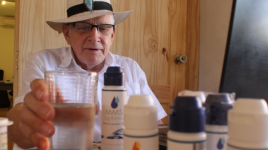La organización panamericana de la salud prohibe el uso de dióxido de cloro o clorito de sodio por las siguientes razones:
Toxicity
• Chlorine dioxide and sodium chlorite react rapidly in human tissues and, if ingested, can
cause irritation of the mouth, esophagus, and stomach, causing severe gastrointestinal
illness, including nausea, vomiting, and diarrhea. There can also be serious hematological
(methemoglobinemia, hemolysis, etc.), cardiovascular, and renal disorders. A drop in
blood pressure can result in severe symptoms such as respiratory complications due to a
change in the blood’s capacity to transport oxygen (FDA, 2020; ATSDR, 2004).
Furthermore, inhalation through nebulizers can generate pulmonary edema, bronchial
spasms, chemical pneumonitis, edema of the glottis, and even death if exposure is above
the occupational exposure limits (WHO et al.., 1994; WHO, ILO, 2000). Prolonged
exposure can result in chronic bronchitis and tooth erosion. High concentrations can
cause adverse effects in different organs (Peck, B. et al., 2011).
• The Food and Drug Administration (FDA) of the United States has received reports of
serious adverse events in patients who have consumed chlorine dioxide, including:
respiratory insufficiency, alterations in the electric activity of the heart, hypotension, liver
insufficiency, anemia, and severe vomiting and diarrhea (FDA, 2020




